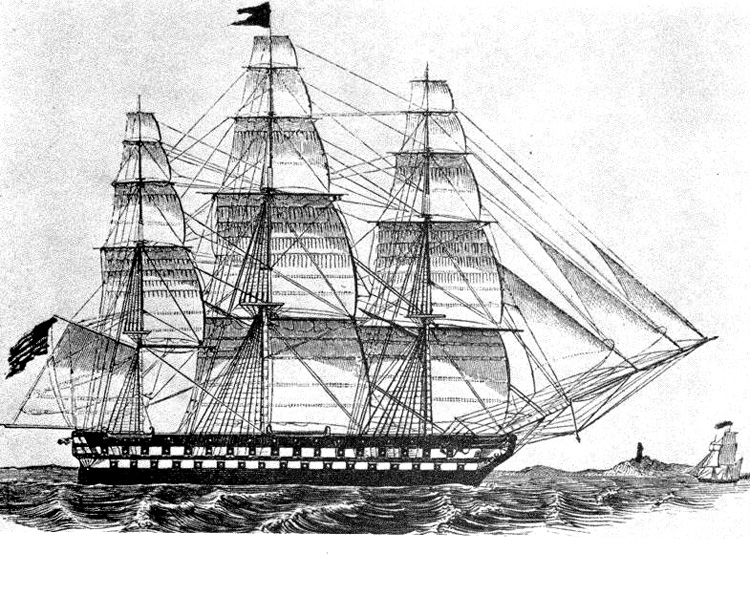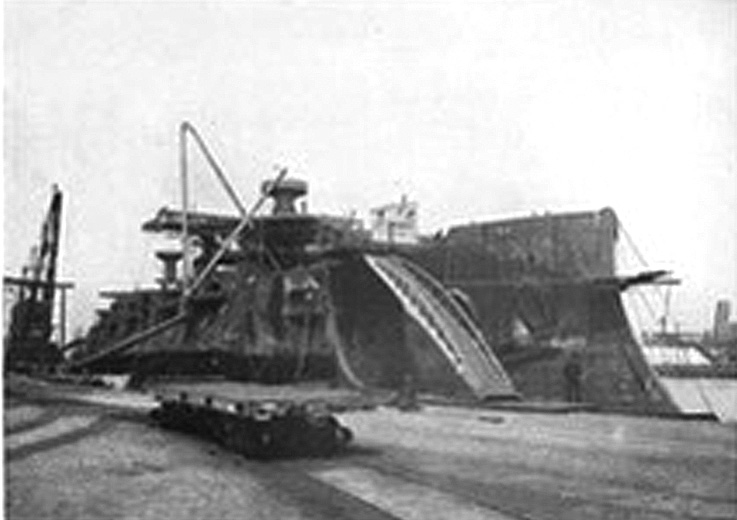
There was a time when Brooklyn ruled the seas. It’s hard to imagine now. But for over 165 years, Brooklyn built the newest and fastest ships in the world, and it all started in Wallabout Bay where the British starved Colonial prisoners in ghost ships during the revolutionary war. It apropos that after peace was signed with Britain, the new nation chose that bay to construct a shipbuilding facility that would build the finest ships in the world.
When the Dutch arrived in 1637, the Lenape Indians occupied those shores. It wasn’t long before a Dutchman bought 337 acres for – I don’t know? -Was it two chicken wishbones and a pair of old wooden shoes that were termite damaged? In any event, I know whatever the deal was, the Indians got screwed. Slowly more Dutch settlers moved across from New Amsterdam, cultivated farms, harvested oysters and fish, and had a mellow life. A couple of small towns rose and being just a short sail or row from New Amsterdam, they did well for themselves all the way through the British occupation during our revolution. In 1781 the first shipbuilding facility was built on land purchased and developed by the Jackson brothers. They also created the town of Wallabout on the site which insured a labor pool.

When the Jacksons went to sell the entire operation in 1800 its value wasn’t lost to President John Adams that the natural protection of New York Harbor and Wallabout Bay would make a strategic place to build a large part of a new navy. Finally, in 1801 the Federal government purchased the property. When President Jefferson came to office its opening was delayed until 1806 due to his opposition to any military build-up.
Soon dry dock facilities were being installed to enable the building of our first armed sloops, frigates and brigantines as the naval commandant looked over the operation from his fancy wooden mansion, which still exists as a landmark. The Navy Yard did have a rather slow start. By the time of the War of 1812 with the British (Again the British, don’t they ever learn?) the United States was not in a good position as far as sea power was concerned. Slips in the yard were used only to refit and rearm over 100 older sloops. We won the war despite our naval issues but let’s not pride ourselves too much. Britain was far too busy fighting Napoleon in Europe and they were far too busy to continue fighting us. The war concluded, and the first fully built and finished ship was the USS Ohio in 1820. In 1824, the Brooklyn Navy Yard was fitted with additional large stone dry docks to increase the production of larger ships. A naval hospital was added shortly after. The precursor to the Annapolis Naval Officers School was added during this decade. It should be noted that at this point in history it was very difficult to find a cannoli or decent pizza anywhere in Brooklyn.

During the 1820s the Brooklyn Navy Yard was somewhat overshadowed by the Navy shipyards in Boston and Norfolk which were faster at following the Navy’s design requirements. These issues were overcome and by 1837 things were steaming along as larger armed sailing ships were completed at a faster pace and the Navy Yard had the privilege of building the first steam-assisted powered ship the Fulton armed with nine brass cannons which was added to the fleet. It had two steam funnels, three sail masts and side paddle wheels. I must admit it did not look intimidating. But steam would eventually overtake sail as the principal means of propulsion in the next few decades. During this period of growth, the admiral in charge was Admiral Perry.
It is interesting to note that part of the roots of the Labor Movement started at the yard when carpenters and mechanics pushed for shorter 10-hour days and Sundays free. After a few years of scuffling, President Martin Van Buren obliged and made it the standard for all government workers except in times of national emergency.
The Navy Yard was also one of the first entities to employ women on a steady basis. Most of them during this period were widows who died working in the yard or sailors lost in war. To help them survive they were hired to sew sail, flags and buntings and any other sewing needs required for the ships and their builders.
By 1851 the yard was functioning at its peak and by 1863 of the Civil War all dry docks were filled with new hulls and being outfitted by 3,930 master shipbuilders, reaching 6,000 by 1865. Crews worked round the clock and houses began to crowd the adjacent streets. Cheap wood row houses with multiple apartments were built by investors especially in adjacent Red Hook where they could profiteer from rents. There were bars on every corner that kept company with not-so discreet houses for men’s “Entertainment”. Many of the workers were tough Irish and German immigrants. After Saturday night, the new Catholic and Protestant churches were filled with men seeking redemption each Sunday morning until next Saturday night.
During the Civil war, the list of warships outfitted and launched included names like Oneida, Adirondack, Ticonderoga, Shamrock, Mackinaw, Peoria, Tullahoma, Maumee, Nyack, Wampanoag, Miantonomoh and others. The war’s end saw the advent of the steam screw propelled ship, the Kenosha being launched in 1868 which became the technological standard for all future ships. Even the famous first iron-clad, the Monitor sailed in for some fine-tuning. During the war, there were plots by the Confederates to blow up the yard to stop the building of ships that were blockading her ports and strangling her. When they were exposed, the shipyard was locked down under strict security preventing any successful Confederate attack.
Post Civil War saw few ships built and the workforce was reduced to 1,200. During this post-war period found the Navy Yard and adjacent commercial docks delft with corruption. However, I find it hard to conceive of any corruption on the Brooklyn waterfront or any place else in Brooklyn. For a period, there were calls for the closing of the Navy Yard but by the beginning of the 1880s shipbuilding began anew.
The facility was modernized to handle much larger steel hull cruisers, frigates and battleships as the Navy prepared for the 20th Century. Theodore Roosevelt was the renewal of the Navy’s greatest advocate. The new ship Maine was launched in 1895 as a state-of-the-art battleship followed by the Cincinnati in 1894. They were the pride of the New Navy until the Maine blew up in 1898 in Havana Harbor causing the United States to fight a war with Spain. The U.S. Navy so outclassed the Spanish that they were forced to give up the last of their colonies both in the Atlantic and Pacific to the United States. America had proven its navy was becoming a real first-class fighting force. The beginning of the 20th Century was upon us. In just a few short years, Col. Theodore Roosevelt, hero of the Spanish- American war and former Assistant Secretary of the Navy would plot a new course for the country that would greatly expand the Brooklyn Navy Yard in the first half of the 20th Century.
NEXT ISSUE – Part II-The Navy Yard from 1900 to its closing in 1966 and beyond.
